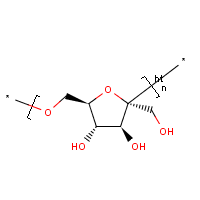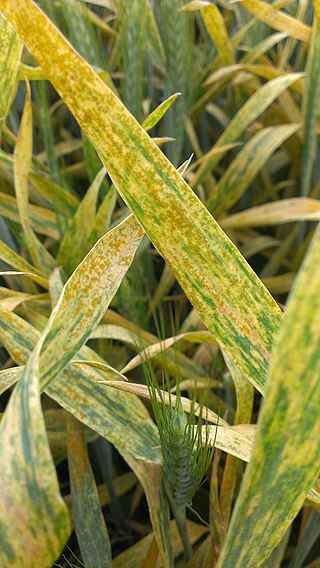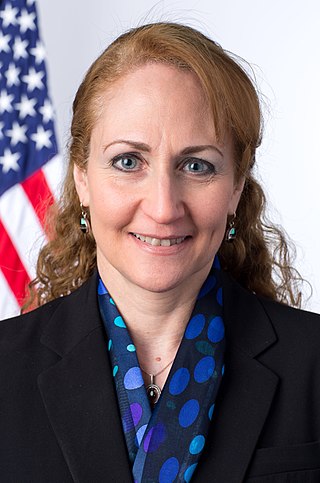[1] [2] [3] [4] [5] [6] [7] [8] Gary D. Foster is a British phytopathologist.
[1] [2] [3] [4] [5] [6] [7] [8] Gary D. Foster is a British phytopathologist.
Gary Foster was educated at Banbridge Academy from 1976-1983. Foster then read microbiology at Queen's University Belfast, graduating in 1986. Four years later, he received a doctorate from the same institution. Foster completed postdoctoral research at the University of Leicester.
In 1996, Foster began teaching at the University of Bristol. Foster founded the journal Molecular Plant Pathology in 2000, [9] serving as chief editor through 2012. [10] Foster was elected a fellow of the Royal Society of Biology in 2011. [11]

Plant pathology or phytopathology is the scientific study of plant diseases caused by pathogens and environmental conditions. Plant pathology involves the study of pathogen identification, disease etiology, disease cycles, economic impact, plant disease epidemiology, plant disease resistance, how plant diseases affect humans and animals, pathosystem genetics, and management of plant diseases.

Stanley "Stan" Falkow was an American microbiologist and a professor of microbiology at Georgetown University, University of Washington, and Stanford University School of Medicine. Falkow is known as the father of the field of molecular microbial pathogenesis. He formulated molecular Koch's postulates, which have guided the study of the microbial determinants of infectious diseases since the late 1980s. Falkow spent over 50 years uncovering molecular mechanisms of how bacteria cause disease and how to disarm them. Falkow also was one of the first scientists to investigate antimicrobial resistance, and presented his research extensively to scientific, government, and lay audiences explaining the spread of resistance from one organism to another, now known as horizontal gene transfer, and the implications of this phenomenon on our ability to combat infections in the future.

Verticillium is a genus of fungi in the division Ascomycota, and are an anamorphic form of the family Plectosphaerellaceae. The genus used to include diverse groups comprising saprobes and parasites of higher plants, insects, nematodes, mollusc eggs, and other fungi, thus the genus used to have a wide-ranging group of taxa characterised by simple but ill-defined characters. The genus, currently thought to contain 51 species, may be broadly divided into three ecologically based groups - mycopathogens, entomopathogens, and plant pathogens and related saprotrophs. However, the genus has undergone recent revision into which most entomopathogenic and mycopathogenic isolates fall into a new group called Lecanicillium.

Brachypodium distachyon, commonly called purple false brome or stiff brome, is a grass species native to southern Europe, northern Africa and southwestern Asia east to India. It is related to the major cereal grain species wheat, barley, oats, maize, rice, rye, sorghum, and millet. It has many qualities that make it an excellent model organism for functional genomics research in temperate grasses, cereals, and dedicated biofuel crops such as switchgrass. These attributes include small genome diploid accessions, a series of polyploid accessions, a small physical stature, self-fertility, a short lifecycle, simple growth requirements, and an efficient transformation system. The genome of Brachypodium distachyon has been sequenced and published in Nature in 2010.

Molecular Plant Pathology is a monthly open access peer-reviewed scientific journal published by Wiley-Blackwell on behalf of the British Society for Plant Pathology. It was established in January 2000 by Gary D. Foster, University of Bristol, who acted as editor-in-chief from 2000 to 2012. The journal covers research concerning plant pathology, in particular its molecular aspects such as plant-pathogen interactions. The current editor-in-chief is Ralph A. Dean. The journal had a 2017 impact factor of 4.188, ranking it 17th out of 223 journals in the category "Plant Sciences". The journal became open access in January 2019.

Pectobacterium carotovorum is a bacterium of the family Pectobacteriaceae; it used to be a member of the genus Erwinia.

Melampsora lini is a species of fungus and plant pathogen found in Ireland and commonly known as flax rust.

Podosphaera fusca is a fungus that parasitically infects plants. It is one cause of powdery mildew in melons and gourds.

Levan is a naturally occurring fructan present in many plants and microorganisms. This polymer is made up of fructose, a monosaccharide sugar, connected by 2,6 beta glycosidic linkages. Levan can have both branched and linear structures of relatively low molecular weight. Branched levan forms a very small, sphere-like structure with basal chains 9 units long. The 2,1 branching allows methyl ethers to form and create a spherical shape. The ends of levan also tend to contain a glucosyl residue. Branched levan tends to be more stable than linear polysaccharides. However, the amount of branching and length of polymerization tends to vary among different species. The shortest levan is 6-kestose, a chain of two fructose molecules and a terminal glucose molecule.

Wheat yellow rust, also known as wheat stripe rust, is one of the three major wheat rust diseases, along with stem rust of wheat and leaf rust.

Thalictrum flavum, known by the common names common meadow-rue, poor man's rhubarb, and yellow meadow-rue, is a flowering plant species in the family Ranunculaceae. It is a native to Caucasus and Russia (Siberia). Growing to 100 cm (39 in) tall by 45 cm (18 in) broad, it is an herbaceous perennial producing clusters of fluffy yellow fragrant flowers in summer.

Jo Emily Handelsman is the Director of the Wisconsin Institute for Discovery at University of Wisconsin–Madison. She is also a Vilas Research Professor and a Howard Hughes Medical Institute Professor. Handelsman was appointed by President Barack Obama as the Associate Director for Science at the White House Office of Science and Technology Policy, where she served for three years until January 2017. She has been editor-in-chief of the academic journal DNA and Cell Biology and author of books on scientific education, most notably Scientific Teaching.
Julian Edmund Davies is a British-born microbiologist and Professor Emeritus in the Department of Microbiology and Immunology at the University of British Columbia.
Peter Michael Waterhouse is a British-Australian plant virologist and geneticist. He is a professor at the Queensland University of Technology and a Chief Investigator at the ARC Centre of Excellence for Plant Success in Nature and Agriculture.
Xanthomonas axonopodis pv. manihotis is the pathogen that causes bacterial blight of cassava. Originally discovered in Brazil in 1912, the disease has followed the cultivation of cassava across the world. Among diseases which afflict cassava worldwide, bacterial blight causes the largest losses in terms of yield.
Gerard D. Wright, PhD, FRSC, is a professor in the Department of Biochemistry and Biomedical Sciences, and Canada Research Chair in Antibiotic Biochemistry at McMaster University who studies chemical compounds that can combat antibiotic resistance in bacteria. He is also an Associate member of the Departments of Chemistry and Chemical Biology and Pathology and Molecular Medicine. Wright was Chair of the Department of Biochemistry and Biomedical Sciences from 2001 to 2007. He was the Director of McMaster's Michael G. DeGroote Institute for Infectious Disease Research from 2007 to 2022. He is currently the executive director of Canada's Global Nexus for Pandemics and Biological Threats. He is also founding director of the McMaster Antimicrobial Research Centre, and co-founder of the McMaster High Throughput Screening Facility.
Mandayam Jeersannidhi Thirumalachar was an Indian mycologist, microbiologist, plant pathologist and the co-founder of Jeersannidhi-Anderson Institute, California. He was the head of R&D at Hindustan Antibiotics Limited and a professor at Banaras Hindu University as well as the Central College of Bangalore. He was known for the development of antifungal antibiotics such as Hamycin, Dermostatin, Aureofungin, MYc-4 and Tetraenenin and was an elected fellow of the Indian National Science Academy. The Council of Scientific and Industrial Research, the apex agency of the Government of India for scientific research, awarded him the Shanti Swarup Bhatnagar Prize for Science and Technology, one of the highest Indian science awards for his contributions to Medical Sciences in 1967.
Sheng Yang He is a Chinese-American plant biologist. He was a University Distinguished Professor at Michigan State University before moving to Duke University in 2020. He has been a Howard Hughes Medical Institute Investigator since 2011. He served as President of the International Society for Molecular Plant-Microbe Interactions from 2014 to 2016. Recognized for his research on plant pathology on the molecular level, he was elected to the US National Academy of Sciences in 2015.
Subhadeep Chatterjee is an Indian molecular biologist and a scientist at the Centre for DNA Fingerprinting and Diagnostics (CDFD). A member of Guha Research Conference, he is known for his studies on plant-microbe interactions and heads the Lab of Plant-Microbe Interactions at CDFD where he hosts several researchers.
Regine Kahmann is a German microbiologist and was Director at the Max Planck Institute for Terrestrial Microbiology in Marburg from 2000 to 2019. She was made a Foreign Member of the Royal Society (ForMRS) in 2020.